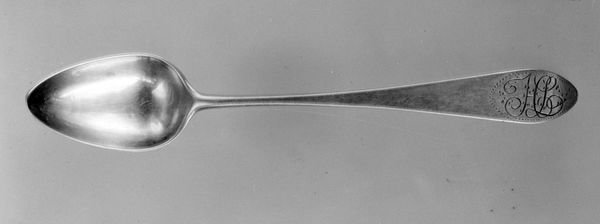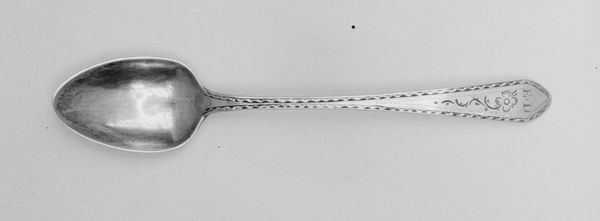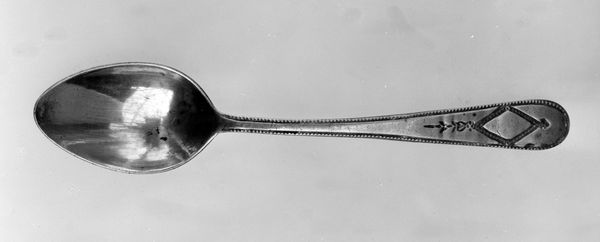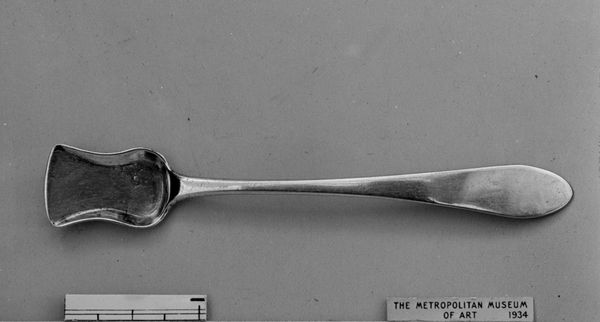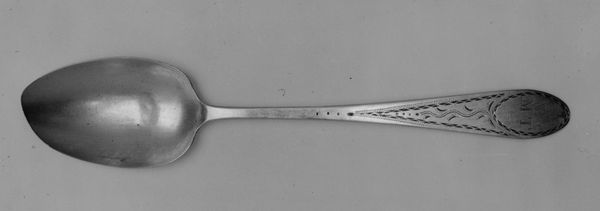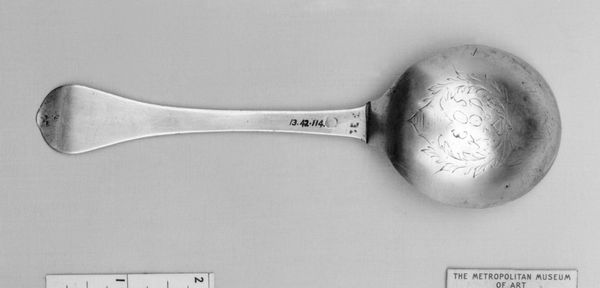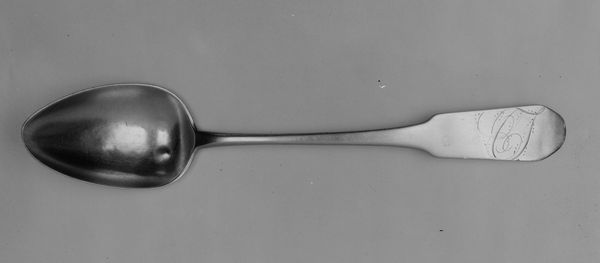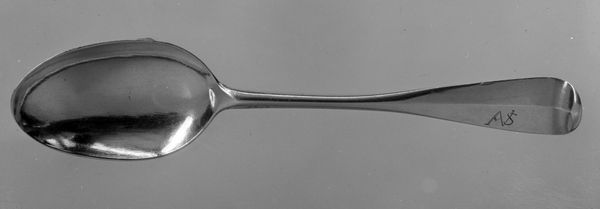
silver, metal
#
silver
#
metal
#
decorative-art
Dimensions: L. 5 3/8 in. (13.7 cm)
Copyright: Public Domain
Curator: Let's turn our attention to this silver teaspoon, a humble yet evocative object dating from 1770 to 1800, currently residing here at the Metropolitan Museum. It was crafted by Samuel Parmelee, a name resonant with the history of early American craftsmanship. Editor: It's remarkable how much presence such a small thing can have. The monochromatic palette emphasizes the sinuous line of the handle, leading the eye so deliberately. There is something austere about its simplicity. Curator: Indeed. The teaspoon whispers tales of domesticity, class, and labor. Whose hands held this? Who benefited from its existence? We must remember that the comfort this object implies was built on systems of inequity. Was it used to stir tea sweetened by sugar harvested through slave labor? Understanding the colonial economy is crucial here. Editor: I’m drawn to the subtle textures and their arrangement. The gentle curve of the bowl contrasts nicely with the straight handle, which terminates in an ornate, almost rococo flourish. Note also the tiny circles—punctuations along its otherwise clean profile. The contrast introduces a kind of controlled chaos. Curator: Precisely. These are markers of status. Ownership of silverware spoke volumes about a family's position within the burgeoning American colonies. Yet, we mustn't forget the artisan, Parmelee himself. As a craftsman, how much autonomy did he truly possess within the constraints of the economic system? Who determined its style? Editor: Perhaps it speaks of the constraints and freedoms within art in general. Parmelee clearly understands and applies techniques—but his personality shines through in the elegant handle shape. It creates a sense of lightness, counteracting the spoon’s inherent material heaviness. Curator: And this act of creativity, within the limits of craft and the demands of society, encapsulates the artistic and social tensions of its era. It is in studying pieces like this one that we have the potential to see how decorative art is representative of bigger economic factors. Editor: Looking again, I agree. Thank you, as always, for illuminating further pathways of viewing into these lovely artifacts.
Comments
No comments
Be the first to comment and join the conversation on the ultimate creative platform.
